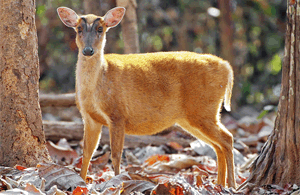 |  |  |
|---|---|---|
 |  |
Wild Life Sanctuaries
Kanchendzonga National Park (KNP)
KNP encompasses an area covering 1784 sq km. It is bounded in the north by the Tent Peak and the ridge of the Zemu glacier. The eastern boundary of this park comprises of the ridge of the Mountain Lamaongden. The southern boundary includes Mount Narsing and Mount Pandim. The western boundary comprises of the mighty Kanchendzonga which presides over its namesake park and the Nepal Peak. Being bounded by such formidable features, it is no wonder that the park has remained ecologically untouched and therefore has provided a natural protection to the flora and fauna it shelters. The fauna includes the Snow leopard, Himalayan Black Bear, Red Panda, Barking deer and many other species. The KNP is surrounded by biosphere which combines nature conservation with sceintific research, environmental training, environmental education monistoring and demonstration. Many places in this park have perhaps never been trod by man and it is very likely that new species may be discovered here.
Fambong Lho Wildlife Sanctuary
This is located about 20 kilometres from Gangtok and covers an area of about 5200 hectares above the road between Singtam and Dikchu with the highest point at a place called Tinjure where a wooden observation tower of the Forest Department exists. The Sanctuary is the home of Himalayan Black Bear, Red Panda, Civet cat and many varieties of birds and butterflies.
Maenam Wildlife Sanctuary
It is located in South Sikkim above the town of Rabongla and covers an area of about 3500 hectares with its highest point being at Maenam at 10,600 ft. It shelters the Red Panda, Leopard cat, civet cat, blood pheasant, black eagles and other animals of the temperate forest.
Singba Rhododendron Sanctuary
It is located near Yumthang in north Sikkim and contains a vast variety of rhododendrons. When in blossom the rhododendrons provide a riot of colour to this small 33 hectare park.
Kyongnosla Alpine Sanctuary
It is situated around the area adjoining the Changu lake and covers an area of about 400 hectares.
Varsey Rhododendron Sanctuary
This Rhododendron Sanctuary lies in the West corner of Sikkim.
Mountains scarred by landslides suggest that development activities are taking a toll on the environment and the flora and fauna are definitely being affected.
The loss of topsoil, soil instability, degeneration of agriculture land and shrinking of catchment areas of the rivers are issues that are cause for concern. The alpine areas of Sikkim in particular which look so powerfully big and formidable are ironically most vulnerable and sensitive to environment degradation. High altitude soil is not readily regenerative and therefore overgrazing of yaks and sheep in alpine meadows has led to many stretches of land becoming barren. Man has realised that forests form an indispensible part of our life support system and placed their conservation high on the agenda.
The best protection for the species is the people who know and care about them. The need for development and the preservation of the ecology have to be balanced and one should not be allowed to overwhelm the other. We do not I require an asteroid to destroy us. Like the anecdotal bull in the china shop we are destroying the world ourselves -slowly and irrevocably without realising it. Emission of green house gases is causing global warming and these cuts across borders and nations. But we have saviours in the form of trees. Quietly they stand absorbing the noxious gases. Perhaps the trees in Sikkim at some given moment would be absorbing carbon-dioxide emitted by a coal fired power station in China and releasing pure oxygen in return. Sikkim has the capability of earning good Carbon credits and doing carbon trading given the good forest coverage. The forest coverage in the state is steadily increasing due to the green initiatives of the state. Grazing in forest areas has been banned and the use of j chemical fertilizers banned as a step to make the state completely organic, Felling of trees is banned: Government also feels that trees can be more productive if left standing. Sikkim is perhaps the only state in the country to set up a Glacier Commission to study the effect of climate change on its glaciers.
